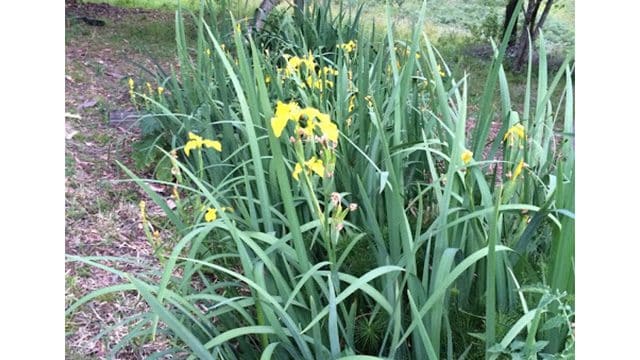Australia is a very dry country, and globally water access and pollution is of growing concern. How we collect, store, conserve, use and reuse water is important.
Here where we live, there is no town water supply. We need to collect our drinking and gardening water, and deal with the wastewater we create.
I really like this situation – it makes you become really conscious of everything that you put down your sink because you know it’s ending up in your landscape. The close connection builds a deeper sense of connection and responsibility. When waste is just taken away for us, we can become complacent.
The ‘grey water’ which comes from our kitchen sink, bath/shower, washing machine and 2 hand basins is fed through simple reed bed system which we made ourselves. There’s no smell and no overflow. It is Council approved, functions fabulously and is super cheap and easy-to-DIY.
There is no black water (toilet water) going into this system – that is all taken care of in the compost toilet system. (http://our-permaculture-life.blogspot.com.au/2016/10/my-toilet-makes-compost-no-water-no.html). This simplifies things incredibly.
 |
| Flowering reedbed garden processing our wastewater. |
We built the simplest system we could find to return our grey water from the house to the garden. It cost us under $500 for the set up and it is approved by our local Council.
We made with scrap building materials from around our site (the timber framing), some thick builders plastic to line the system, newspaper as a bedding material under this to protect the plastic from sharp roots and stones, 20 mm gravel to fill it up and necessary piping.
One of the biggest expenses was asking a bobcat to dig the hole for us (5m long, 1m wide, 0.5m deep), although it would be possible to dig it.
We wanted a system that could easily be replicated by others, by those in small cabins (tiny homes) and in countries where expensive and high-tech systems are just not viable.
I am really happy with how this has worked and how it has capably dealt with the wastewater from our household of five people – admittedly we are quite conservative in our water use, because we want to be, but also because we can only use what we have in the tank. Our main water tank has never run out yet in more than 10 years, and just in case, we have another 2 tanks higher up in the landscape from which we can draw from in an emergency.
I’ll talk more next time about our the design of our water system.



Bioretention systems are great, I was only reading about their standardisation and use for storm water management the other day after watching a few of Ideanthro's videos on YouTube.
I do question monocultures in these systems however, and as I suggested to him, diversity in the plant species and rhizosphere would aid in hosting more biological diversity needed to recycle all kinds of compounds and keep the soil, soil community and human pathogens in check.
And while they have a lot of positives, after a lot of reading I still have niggling concerns about any closed/lined biofiltration system that concentrates material in the one place, and worry some of these systems are building up toxins over the longer term if they aren't designed well, managed, harvested and distributed, then refreshed like you would changing a used drinking water filter. Especially rain gardens fed from roofing and the build up of heavy metals in those soils.
After a question on Twitter and lots of Google scholar and calculations later, I also learned that even repeated vermicomposting can increase lead levels in some species of worms and castings that are borderline when compared with Australian recommendations for safe physical handling of soil lead levels, let alone feeding of the worms to chooks. I've also seen vermicompost systems used for bioretention of household greywater that periodically get harvested, spread and replenished, just like replacing a filter, and that may be an alternative approach.
I also learned last week that during wind events and soils watered with wastewaters that up to 15% of viruses in one study were aerosolized and 89% of that can happen in 30 mins, so wastewater irrigation of soils exposed to wind is a bad idea, and reeds or other kinds of wind breaks in bioretention systems are a great idea. It'd be interesting to know if fans like used in your humanure compost system also have the potential to aerosolize any pathogens. I doubt that's ever been studied.
Hi Morag. Previous PDC graduate of yours (1999) here, and a past designer of sustainable on-site wastewater systems. Great reedbed. Did you incorporate an overflow at the end?
Hi Michelle, Lovely to hear from you! The overflow currently goes to a banana circle. There are designs for it to have underground piping but to be honest, because we are conservative in our use, that seems to cope extremely well.
Thanks – so many interesting questions. Lots more to explore – as always!
Just wondering where the lead comes from in the worm farms.
I can't remember where I first saw the idea but it's similar to the ECO design aerobic grease filter that's filled with compost and starter worms at the bottom of the page here: https://damnthematrix.wordpress.com/2015/03/04/sustainable-greywater/
The design I remember fed the outflow into a bioretention system like yours rather than straight to the lawn via what they call pots that distribute the water.